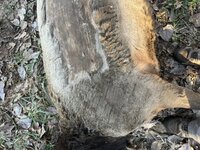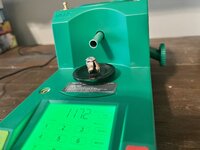I’m not sure exactly what you mean?
However, they kill/work in exactly the same way as any other bullet- they just crush and tear less tissue. A mono (any bullet) only crushes what tissue it physically touches. The velocity of the bullet passing through tissue causes a temporary stretch cavity to form by the passage of the projectile (that is- the tissue stretches radially outward) and if above 2,200 to 2,000’ish fps, some of that tissue will stretch fast enough/wide enough to tear, causing the temporary strength cavity to be apart of the permanent wound cavity.
Imagine a bullet like a Barnes moving through tissue- it’s crushing what it physically touches- so when optimal about .5 to .6 of an inch circle due to the expanded diameter. While it’s passing through that tissue, the tissue is expanding or stretching outward as the bullet passes, and if above 2,200’ish FPS the tissue exceeds its elasticity and some of it tears- with a mono it might another .5 to 1 inch or so around the bullet where tissue tears. So we ultimately get about a 1-2” wound path or width. Visually a 20-30 inch long rod, 1” in diameter or so.
Now, imagine a bullet that fragments rapidly- such as an ELD-X since it is this thread. As it is passing through the tissue, it also is expanding/deforming and crushing the tissue it physically touches, so you get that same .5 to .6 inch permanent channel. As well, the tissue is being stretched outward away from the path of the bullet, but as this bullet penetrates it is constantly losing pieces of lead and copper jacket as fragments that are being spun outward from the main bullet. So you get stretched tissue- which can be up to 30x the diameter of the bullet, and then at its stretched limit where copper or high weight retention bullets the tissue would just rebound- a piece of copper jacket hits it and causes a massive tear in the tissue; not unlike stretching a rubber-band to its limit, and then touching it with a scaple- POP. Now, unlike the nonsense stated about lead bullets throwing lead “all through the meat”, small particles of lead and copper jacket do not have the mass to travel more than a couple inches from the main bullet in tissue. So those fragments are generally within 2 to 3 inches of the bullet path, however due to stretching and tearing of that tissue in the temporary stretch cavity with those fragments, you get a wound that is 4 to 8 inches wide. So now, imagine you have a rod that is 20+ inches long and 2+ inches in diameter, but it also has a football attached to the to the entrance side of the rod.




